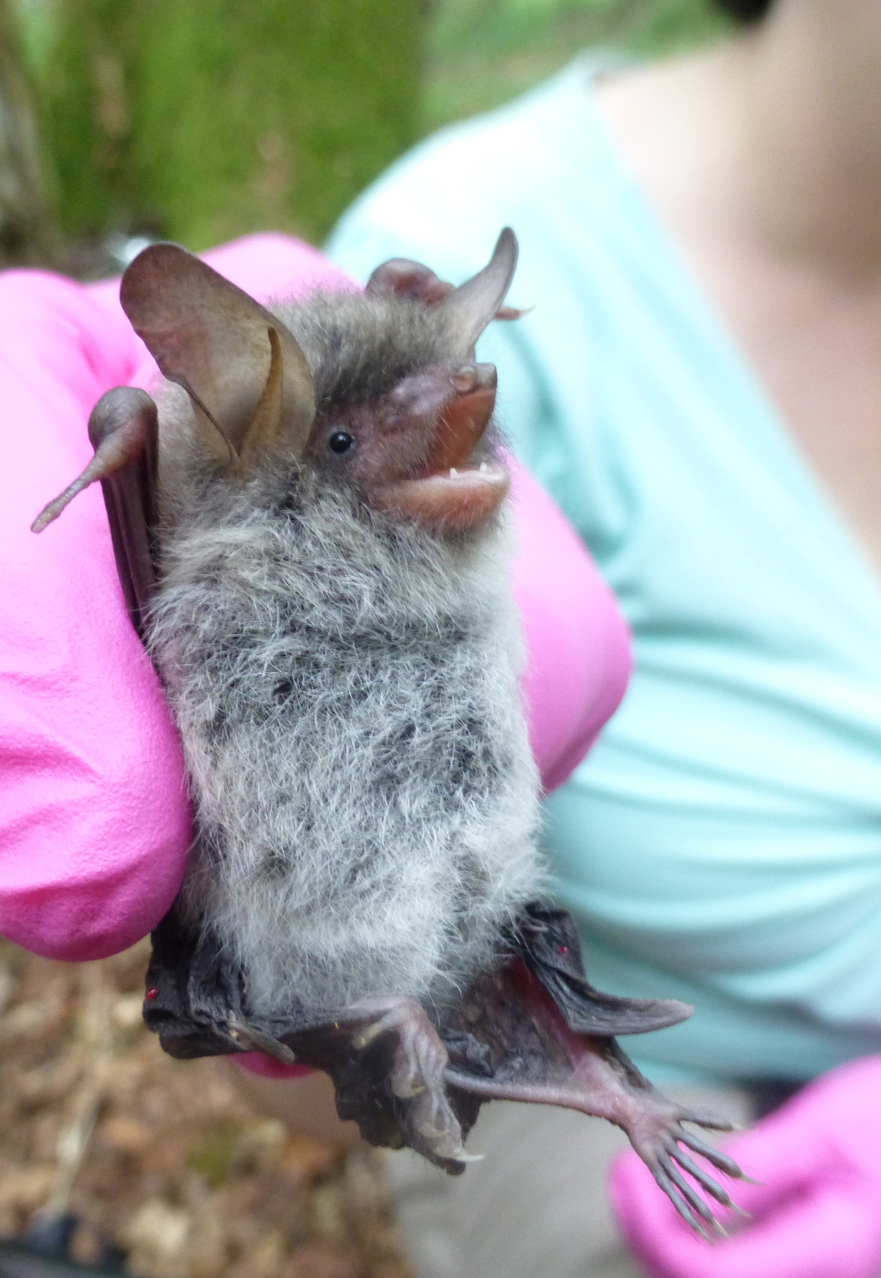News
Tits help reveal the private lives of bats
They might all look the same to the untrained eye, but the different species of small insectivorous bats living in Wytham Woods have distinct life histories. More than a decade of study by WildCRU’s Wytham Bat Project, led by the strictly nocturnal Dr Dani Linton, reveals that survival rates of Natterer’s, Daubenton’s and Long-eared bats all differ, despite the ecological similarities of their lives in Wytham Woods. But how did the tits help? Well, since the pioneering days of David Lack, most of the tits, great or blue, in Wytham obligingly agree to nest in the boxes provided for them by our colleagues in the Edward Grey Institute of Field Ornithology – a symbiosis that makes the tits cosy and the ornithologists world famous. But now mammalogists are cashing in, because when the tits have fledged these boxes provide comfortable homes for the spring and summer roosts of our bats – there, the bat team gently extracts the dozing bats, weighs, measures and, most importantly, tags them. Thousands of recaptures later, we discover from these tagged bats that the background story is that average adult survival rates are relatively high and similar in all three species, but between-year fluctuation in survival, and age and sex differences in survival rates, vary markedly between the bat species.
In our paper, published in Global Ecology and Conservation we were led by Dr Antica Culina who emphasised the importance of accounting for different sources of detection bias when estimating demographic rates in wild populations. Our findings for these three species of bats are novel and important, but even more important is the generality of the principle behind, and the ubiquity of, our methodology which could be applied to any species. In our case the system-specific causes of detection bias were the different social organisations of the three species and the extent to which each sex of each species used the tit boxes.

-
 Danielle Linton holding the first juvenile Natterers' bat ringed in 2014, provided by Denise Foster
Danielle Linton holding the first juvenile Natterers' bat ringed in 2014, provided by Denise Foster





